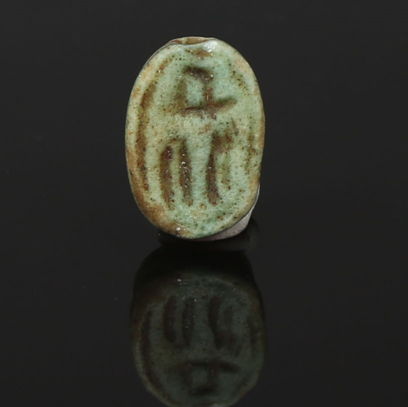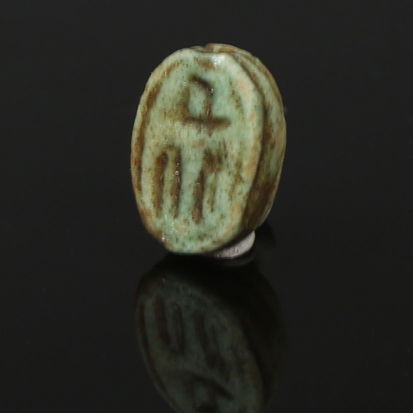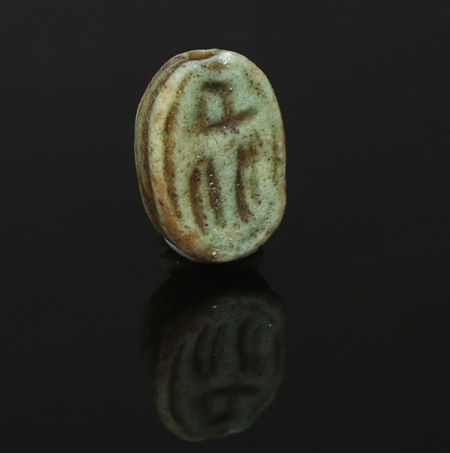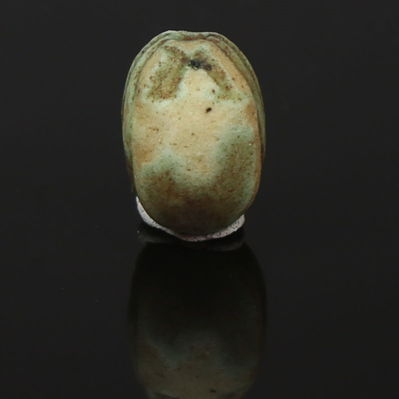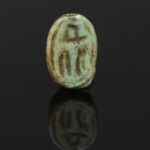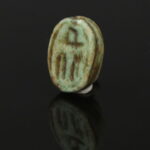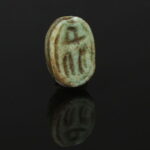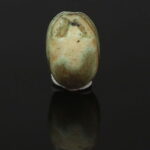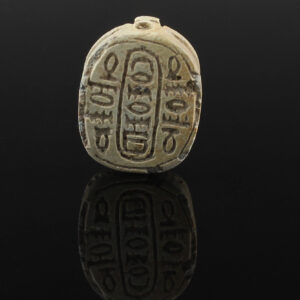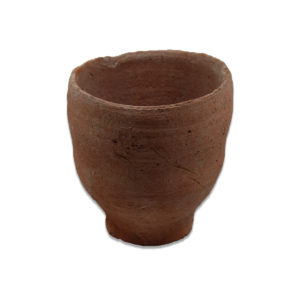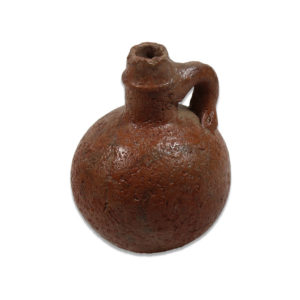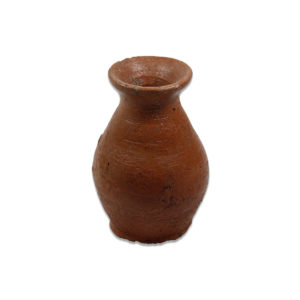Description
| ITEM | Scarab for pharaoh Apopi II |
| MATERIAL | Faience |
| CULTURE | Egyptian |
| PERIOD | Second Intermediate Period, 15th Dynasty, 1580 – 1540 B.C |
| DIMENSIONS | 13 mm x 8 mm |
| CONDITION | Good condition |
| PROVENANCE | Ex Museum Exhibiton of the Arbeitsgruppe für Biblische Archäologie, Germany (Deaccession) |
Apopi II, also known as Apepi II or Apophis II, was a significant figure in ancient Egyptian history during the Second Intermediate Period, particularly in the Hyksos-controlled region of Lower Egypt. He ruled as a pharaoh of the 15th Dynasty and is believed to have reigned around the 16th century BCE. Apopi II’s reign was marked by political instability and conflict, as he faced challenges from both local Egyptian rulers and foreign powers such as the Theban kings in Upper Egypt.
Scarab amulets were prevalent during the Egyptian period, including the time of Apopi II. Scarabs were small, beetle-shaped amulets carved from various materials such as stone, faience, or precious metals like gold. These amulets were highly symbolic and held significant religious and cultural importance in ancient Egyptian society. Scarabs were associated with the god Khepri, who represented the rising sun and the cycle of rebirth and regeneration.
Scarab amulets were often inscribed with hieroglyphic texts or decorative motifs, including protective spells, personal names, or religious symbols. They were worn as jewelry or carried as talismans, believed to bring good luck, protection, and spiritual guidance to the wearer. Scarab amulets were also used in funerary rituals and placed in tombs as offerings to accompany the deceased into the afterlife. Overall, scarab amulets were powerful symbols of eternity, transformation, and divine protection in ancient Egyptian culture, embodying the beliefs and values of the civilization.


